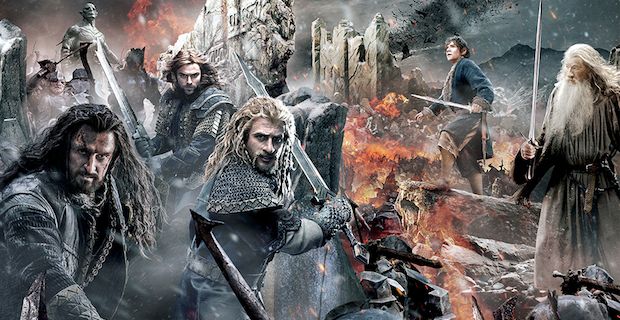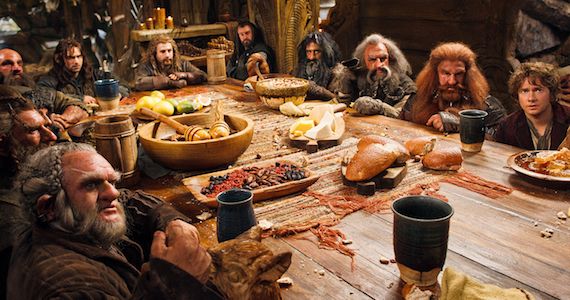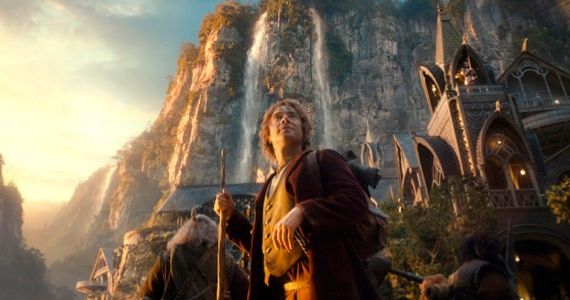When The Hobbit: The Battle of the Five Armies opens in theaters, it will bring Peter Jackson’s six-movie, 13-year Lord of the Rings franchise to an end. While the Lord of the Rings trilogy was widely regarded as a cinematic masterpiece, The Hobbit prequel trilogy has drawn more than a few criticisms, including stretching one book into three movies and the 48 frames per second (fps) format.
Now, while promoting the latest installment of The Hobbit trilogy, Jackson discussed the length of the final film, how much extra footage will be included in the extended cut of The Battle of the Five Armies, as well as the trilogy’s frame rate format.
At an overseas press day for The Battle of the Five Armies, Jackson revealed how long the extended cut of the film will be and teased what will be included within the additional footage. He said, “the extended cut, which will be about 30 minutes longer, will have some additional Beorn stuff.” Beorn (Mikael Persbrandt), the shapeshifting man, first appeared in The Desolation of Smaug.
At two hours and 24 minutes, The Battle of the Five Armies is the shortest of all the films in the franchise. Comparatively, each of the Lord of the Rings movies is nearly three hours, An Unexpected Journey is two hours and 49 minutes, and The Desolation of Smaug is two hours and 41 minutes. With the additional 30 minutes of footage, The Battle of the Five Armies will also be the shortest of all the extended cuts.
Viewers who have felt The Hobbit movies stretched the story out unnecessarily will likely be pleased the final film is the shortest of the franchise. But, for any fans of the series who collect and watch the extended cuts of all the films, the 30 extra minutes will provide a reason to look forward to the extended edition of The Battle of the Five Armies.
At the press day, Jackson also defended - again - his choice to format the Hobbit movies in 48fps. The director reiterated his argument that the format will stand the test of time better than 24fps and will provide a more exciting theater experience.
Read Jackson’s full quote:
“I just think it's a much better way to see films. After the first 'Hobbit' film, I found out a lot of tricks to make it look less like video. I understood the criticisms. So the second and third movies have a slightly more textured look. I regret more people didn't see them like that. 100 years ago movies were black-and-white, silent, and 16 frames a second. So 100 years from now, what are they going to be now? But you can absolutely guarantee that they're not going to be 24 frames a second and they're not going to be 2D. And ultimately the audiences for movies are beginning to dwindle that it's becoming a very serious issue for the industry. The industry has to have the audience in order to make these films. So it's a serious thing – how do you get people to leave their houses and go to the theater? I think it's important that filmmakers look at the technology and figure out how to make the theatrical experience a little more exciting.”
Although, of course, we won’t know how well Jackson’s films will stand up against movies 100 years from now, the director’s intention behind his choice was to create a better movie experience. Whether or not he accomplished that task is largely up to each individual viewer.
However, the debates surrounding the 48fps format and the split of The Hobbit into three movies will likely continue among fans long after The Battle of the Five Armies premieres.
The Hobbit: The Battle of the Five Armies opens in theaters December 12th, 2014.
Source: Indiewire



